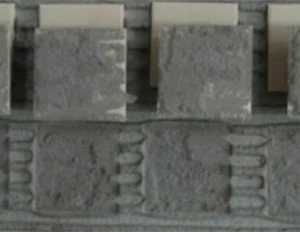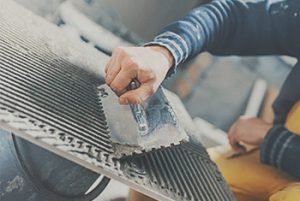5 Roles of Cellulose Ether Plays In Tile Adhesive
Cement-based tile adhesive is an adhesive used to bond tiles to various substrates. Cellulose ether is an indispensable component in the formulation of tile adhesives. Either it is basic tile adhesive or high-quality tile adhesive, cellulose ether both play a vital role.
1. Water addition amount
Water addition amount refers to the amount of water added to the dry powder tile adhesive that meets the requirements of specific use. In laboratory tests, the amount of water added is adjusted by testing the viscosity of the fresh mortar. Different cellulose ethers bring different mortar water requirements.
2. Anti-slip property
European standard gives the definition of slip, and the corresponding standard in China is JCT547. All modified cellulose ether can provide a certain basic anti-slip property for tile adhesives, and highly modified cellulose ether can significantly improve the anti-slip properties of tile adhesives. MilaCellTM Hydroxypropyl Methyl cellulose (HPMC) is a highly modified cellulose ether in the market, with excellent slip resistance and good workability.
 3. Open time
3. Open time
Moisture evaporation and hardening of fresh mortar lead to skinning, which can lead to an insufficient effective wet-bonding area of the tile. This time from fresh mortar application to skinning is defined as the open time. Modified cellulose ether can significantly delay skinning, thereby increasing the effective wet-bond area of tiles.
 4. Water retention rate
4. Water retention rate
Cellulose ether has a very high shrinkage capacity. As long as there is water in the mortar system, the cement in the tile adhesive can continue to hydrate to produce mineral crystallization, which is the basis for the cement-based tile adhesive to produce bonding strength. Secondly, the water retention capacity can also greatly reduce the occurrence of cracks and make the mortar easy to construct. The water retention rate is positively correlated with the viscosity of cellulose ether and the additional amount. Hydroxypropyl Methyl cellulose (HPMC) from MilaCellTM can be uniformly and effectively dispersed in cement mortar and gypsum-based products, and encapsulates all solid particles, and forms a wetting film, and the moisture in the base is gradually released over a long period of time.
5. High-temperature resistance
The viscosity of cellulose ether is related to temperature. When cellulose ether solution is heated, its viscosity will gradually decrease until it suddenly loses viscosity when it reaches a certain temperature. This process is reversible, and when the temperature drops, the solution regains its viscosity. The high-temperature resistance is characterized by the amount of viscosity loss during the heating process, which means that the water retention of the cellulose ether decreases, and the adjustment time is shortened.
MilaCellTM as a professional manufacturer of cellulose ether always implements the principle of providing high-quality products and solutions to customers.
For tile adhesive manufacturer, MH-150K (Viscosity 45,000-55,000 mPa.s Brookfield) and MH-200K (Viscosity 70,000-80,000 mPa.s Brookfield) is your preferred choice. It has excellent performance in anti-slipping, water retention, and extended working time.

 3. Open time
3. Open time 4. Water retention rate
4. Water retention rate